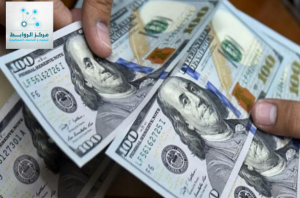BY: Shatha Kalel
Recently, there has been a rise in the exchange rate of the US dollar against the Iraqi dinar. The main markets in Baghdad and Basra closed with a selling price of 142,250 dinars and a buying price of 141,250 dinars. In Erbil, the selling price reached 141,000 dinars and the buying price 140,000 dinars. These increases reflect growing pressure on the Iraqi dinar, raising concerns about inflation, economic stability, and the purchasing power of citizens.
Causes of the Dollar’s Rise
1. Decrease in Dollar Supply
The Central Bank of Iraq has taken measures to restrict the sale of dollars in order to curb smuggling and money laundering. This has led to a reduction in dollar availability in local markets, pushing prices up due to scarcity.
2. Smuggling and Sanctions Evasion
Reports indicate that dollars sold through Iraq’s currency auctions are being smuggled into neighboring countries like Iran and Syria, which are under U.S. sanctions. The U.S. Treasury and the Federal Reserve have pressured Iraq to tighten control, limiting access to the dollar through unofficial channels.
3. Political and Institutional Instability
The ongoing political instability in Iraq weakens investor confidence. Unclear policies and continuous changes in government reduce foreign investment, further devaluing the dinar.
4. Dependence on Imports
Iraq heavily relies on imported goods, which are paid for in dollars. As the dinar weakens, the cost of these imports rises, increasing the demand for dollars.
5. Structural Economic Challenges
Iraq’s economy depends almost entirely on oil exports, making it vulnerable to global oil price fluctuations. Non-oil sectors remain underdeveloped and do not provide alternative sources of hard currency.
Impacts of the Rising Dollar
1. Inflation and Increased Cost of Living
The rise in the dollar leads to higher prices for imported goods, driving up inflation and placing additional burdens on low-income households.
2. Decline in Purchasing Power
As the value of the dinar drops, the salaries and savings of citizens lose value, especially when purchasing essential goods like food and medicine.
3. Pressure on the Business Sector
Companies that rely on imported materials or products face higher costs, which may reduce profit margins or force them to raise prices, potentially reducing consumer demand.
4. Widening Social Gap
Those with access to dollars or dollar-linked assets benefit from the exchange rate changes, while others suffer, increasing the gap between social classes.
Possible Solutions
1. Enhance Transparency in Dollar Sales
The Central Bank must gain better control over currency auctions and ensure that dollars are reaching legitimate traders and companies.
2. Support Non-Oil Exports
Iraq must diversify its economy by investing in agriculture, industry, and services to reduce reliance on imports and create alternative sources of foreign currency.
3. Strengthen the Banking Sector
Improving the banking system, expanding digital services, and complying with international standards can reduce reliance on the black market and help stabilize the exchange rate.
4. Tighten Border Control
Border monitoring should be enhanced, and modern technologies should be adopted to track the movement of goods and currency to combat smuggling.
5. Reform Subsidy and Social Welfare Systems
In the short term, targeted cash assistance or social protection programs can help ease the burden on poorer groups until long-term reforms are in place.
6. Cooperate with International Partners
Iraq should strengthen its cooperation with the United States, the International Monetary Fund (IMF), and other partners to improve financial governance, which can help restore confidence and provide technical and financial support.
Conclusion
The rise of the dollar against the dinar reflects deep structural and governance challenges in the Iraqi economy. Although external pressures exist, the real solutions lie in internal reforms. Combating corruption, diversifying the economy, and enhancing financial transparency can help stabilize the currency and protect citizens from further economic decline. Overcoming this crisis requires swift and coordinated action from the government, the Central Bank, and international partners.
Economic Studies Unit / North America Office
Al-Rabetah Center for Strategic Research and Studies

